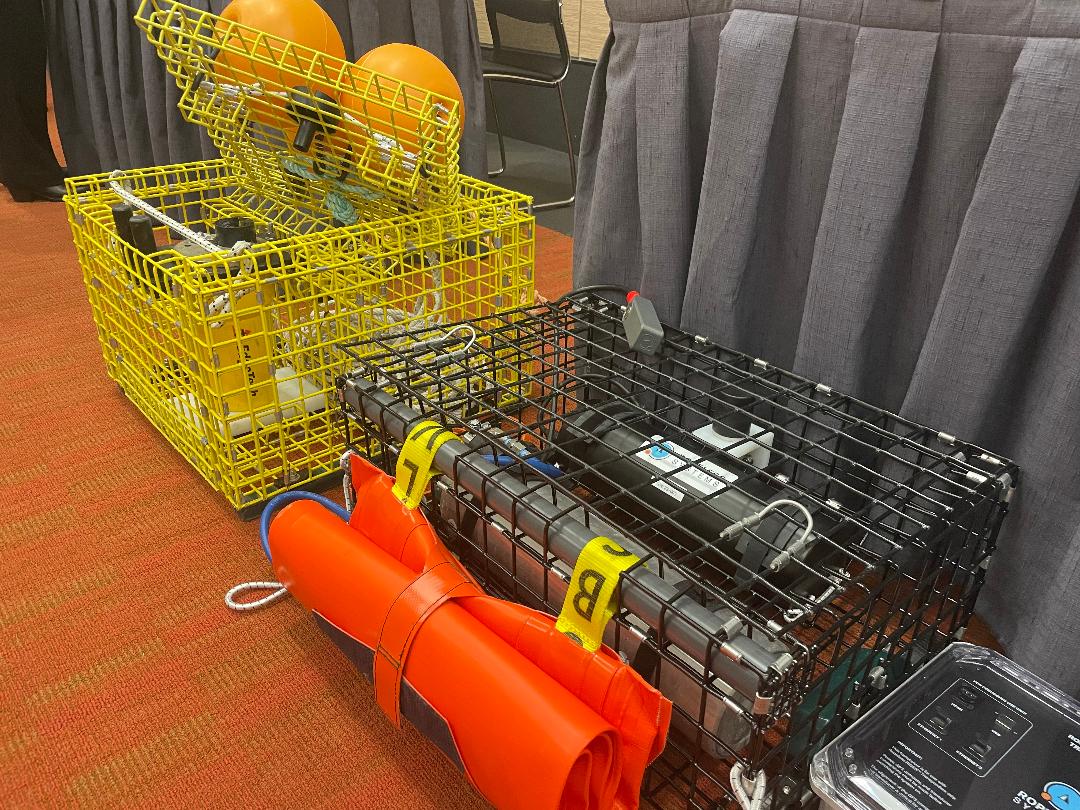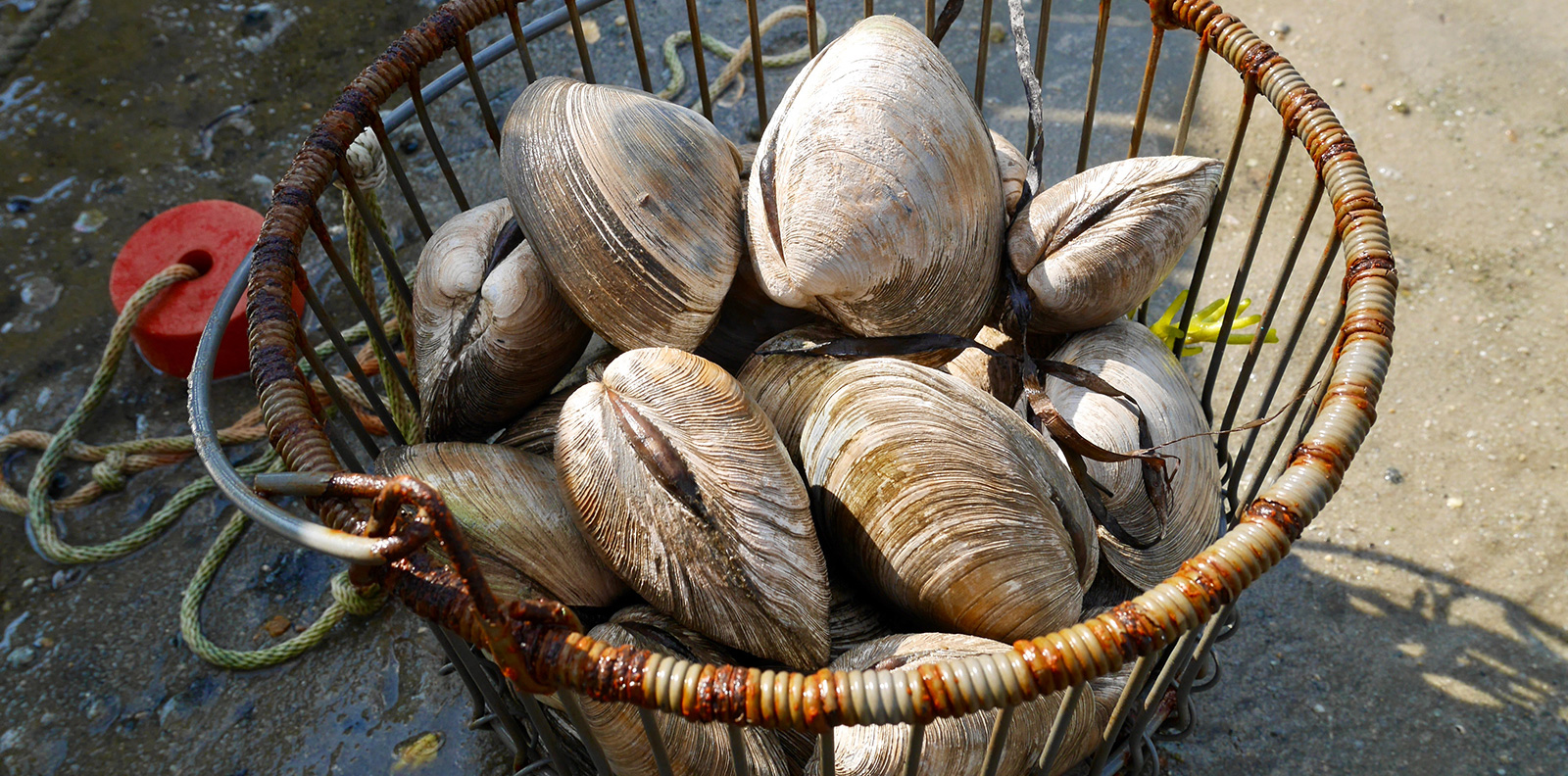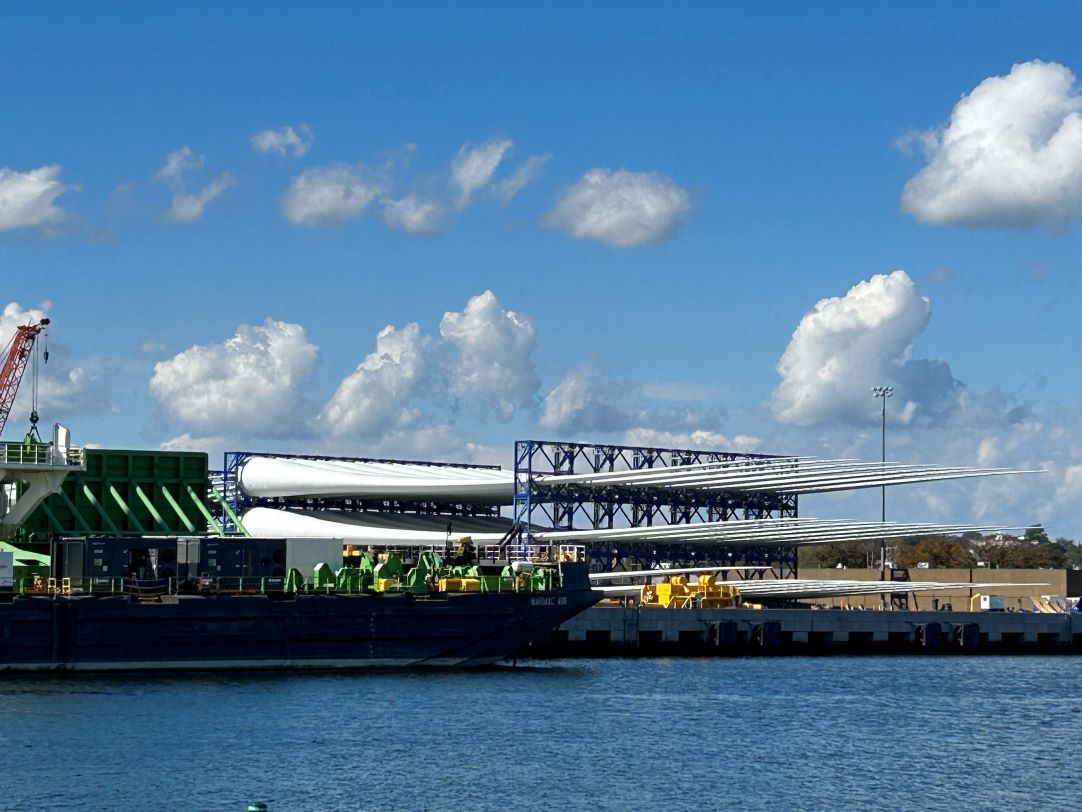Spraying for Mosquitoes a Risky Proposition for Shellfish Nursery Grounds
Southern New England lobstermen believe insecticides killing lobster larvae
July 29, 2014
One year after Connecticut lawmakers voted to restrict the use of methoprene (Altosid®) and resmethrin (Scourge®) in coastal communities to protect shellfish nursery grounds, state mosquito controllers are finding other ways to protect the public from mosquito-borne diseases. But one of the solutions is much like the practice they sought to eliminate.
Since the ban, the Connecticut Department of Energy and Environmental Protection (DEEP) hasn’t sprayed resmethrin along the coast, according to the state’s mosquito control coordinator, Roger Wolfe. DEEP only sprays for mosquitoes on state-owned property, but the new law also applies to municipalities.
“We have lots of mosquitoes, but no viruses,” Wolfe said.
Like Rhode Island and Massachusetts, DEEP now uses the biological agents Bacillus thuringiensis israelensis (Bti) and Bacillus sphaericus (Bs) that selectively target mosquitoes. But DEEP plans on spraying with sumithrin instead of resmethrin to knock down mosquitoes on the fly if the West Nile virus (WNV) or eastern equine encephalitis (EEE) virus pose a threat this summer.
However, sumithrin, a synthetic pyrethroid with the trade name Anvil®, carries with it the same high toxicity to fish and aquatic invertebrates as resmethrin.
Synthetic pyrethroids such as resmethrin, sumithrin and prallethrin are neurotoxins that act much like DDT — they interrupt nerve impulses, causing paralysis and death. All three are known to be acutely toxic to fish and invertebrate aquatic species.
When these chemicals were first approved by the Environmental Protection Agency (EPA) in the mid-1970s and ’80s, synthetic pyrethroids were touted as being “similar to the chemicals in chrysanthemums” — a tagline still found on distributor labels. In the laboratory, researchers used chrysanthemum’s natural insecticide properties, but created chemicals that are far more toxic.
Sumithrin is lethal to rainbow trout in concentrations as low as 17 micrograms per liter of water, according to the label and literature by international insecticide distributor Clarke Mosquito Control. A microgram is one millionth (0.000001) of a gram.
Even as little as 0.07 micrograms or 0.000007 grams of sumithrin has been shown to be lethal to honeybees. Prallethrin, used with sumithrin to enhance its toxicity, is lethal to honeybees at levels as low as 0.028 micrograms or 0.0000028 grams, according to Clarke Mosquito Control.
Since such small amounts proved lethal to organisms, researchers had to devise new ways to measure toxicity in aquatic systems. A 2005 report on acute toxicity to juvenile lobsters published in the Journal of Shellfish noted that estuarine and marine crustaceans are susceptible at levels as little as 0.01 to 0.001 micrograms of resmethrin and sumithrin, and devised testing methods down to the nanogram (ng) of water.
In addition to being highly toxic in minute quantities, the manufacturer Sumitomo Chemical’s bio-concentration studies show that sumithrin accumulates in fish such as carp by two to seven times the concentration in the surrounding water. The Journal of Pesticide Reform reported that used with a synergistic chemical such as piperonyl butoxide, which amplifies sumithrin’s toxicity, bio-concentration factors range from 24 to 38 times the concentration of sumithrin found in the surrounding water.
Sumithrin’s label not only restricts use of the pesticide near open water, but also states that runoff from treated land may be hazardous to aquatic species.
Warnings ignored
Both Connecticut and New York sprayed Scourge over Long Island Sound communities and placed Altosid briquettes or “dunks” in catch basins, with outlets to the Sound, to kill mosquitoes. After Hurricane Floyd dropped torrential rains in mid-September, lobstermen said they began witnessing mass die-offs of lobster in Long Island Sound.
For the next 13 years, as frequent pesticide applications continued, researchers said the first die-off was due to oxygen depletion, a condition known as hypoxia, coupled with a rapid turnover of the water column.
Longtime lobstermen countered that past bouts with the most severe hypoxia didn’t eliminate lobsters entirely. Lobsters would travel east to cooler, deeper water, they said, but always returned to the western part of the Sound when the water cooled and regained oxygen.
In 1999, the lobsters were dying in the traps, and lobstermen said they also found other abnormalities. They blamed the use of insecticides.
“Lobsters were laying their eggs and then molting their shell,” recalled Nick Crismale, president of the Connecticut Lobstermen’s Association. “The shells with eggs on them were coming up in the traps and soft shell females were there, too. It wasn’t normal.”
Female lobsters lay their eggs, known as a “clutch,” on the underside of their shell. As the roe hatch into larvae, they float to the upper foot of water and travel with the currents. After several molts in their first three months, they turn into tiny 5-millimeter juvenile lobsters, nicknamed “crickets.”
The juveniles swim down to the rocky bottom, where they live for five to seven years, continuing to grow and molt their shells until they reach adulthood.
The larvicide methoprene in Altosid prevents molting and growth by mimicking and replacing hormones in insects. Lobsters are in the same scientific classification, arthropods, as insects.
“Without juveniles, there’s no adults,” Crismale said.
There were two more die-offs, in 2005 and 2011. In 2011, researcher Lance Stewart of the University of Connecticut found both methoprene and resmethrin in tissue samples of dead and dying lobsters. Previously, both chemicals were thought to dissipate within a short time and not bio-accumulate.
On-demand spraying
Bristol County Mosquito Control (BCMC) in Massachusetts uses Duet®, a sumithrin/prallethrin mix. One of 10 mosquito control boards in the state, BCMC has received 5,494 requests for spraying in Bristol County since the first week of June and has completed 5,125. Bristol County abuts portions of Narragansett Bay and includes portions of Buzzards Bay.
However, as of July 2, the EEE virus and WNV hadn’t shown up in any of BCMC’s mosquito traps.
Spraying at this time of year is also done for convenience, such as the spraying conducted July 2 in New Bedford in preparation for waterfront crowds at the Fourth of July fireworks and again July 16 in preparation for a downtown classic car show.
Plymouth County Mosquito Control also uses sumithrin ground spraying on demand. As of July 17, mosquito control superintendent Tony Texiera said the agency had just received notice of the first mosquitoes in Plymouth County that tested positive for EEE. Plymouth County spraying began in May.
“We’re doing it from a public health standpoint,” said Jennifer Dacey, BCMC’s mosquito control coordinator, noting that last year an unvaccinated horse died from EEE in the coastal community of Dartmouth. “Residents in Raynham and Easton respond much differently than other communities because they’ve lost people to EEE.”
The town of Raynham had one fatality due to the extremely rare but often fatal EEE in 2011, and the town of Easton reported one fatality in 2012. In 2011, there also was a reported death from WNV in Massachusetts. WNV is a more prevalent virus but one in which fewer than 1 percent are severely stricken, according to the Center for Disease Control. Most don’t experience symptoms, and about 20 percent come down with mild symptoms such as a fever.
The Massachusetts Reclamation and Mosquito Control Board steps in and uses sumithrin in large-scale aerial spraying when there is a determination that the EEE virus is present in a number of mosquitoes in several communities and may spread further.
The last time that occurred was in 2012, with other events in 2010 and 2006. According the board’s website, spraying occurs up to the shoreline of water bodies, even as it acknowledges the EPA warning that sumithrin shouldn’t be applied within 100 feet of lakes, streams, rivers or bays because of its acute toxicity to aquatic species.
This practice isn’t as common in neighboring Rhode Island.
“Adulticide is almost never used,” Rhode Island Department of Environmental Management (DEM) mosquito control director Alan Gettman said. “The state conducts annual surveillance for the EEE virus. If it is inordinately high in many samples and numerous mosquito species, and if it is not too late in the season, then spraying occurs.”
Gettman recalled only one time in his 22 years with DEM that there was a sufficient enough threat early in the season to require spraying with a mosquito adulticide. And then it was only in one area — Westerly in 1996.
Gettman said it doesn’t make sense to spray in mid- to late September when evenings are cool and frost is on the way. At that time, mosquitoes are ready to overwinter. He said larvicides such as methoprene dunks were distributed to local public works departments upon request from 2000 to 2009, for use in stormwater catch basins. Based on research at his office, when the controversy over methoprene arose, DEM switched to the Bti/Bs dunks, trade name Four Star®.
“The new dunks work better,” Gettman said. “The Bti/Bs briquettes sink in the water. When there’s a substantial rainfall, some of the (Altosid dunks) used to float into the pipes, which wasn’t effective.”
Stressed lobsters
Long Island Sound lobstermen weren’t alone in their concern. The southern New England lobster stock is at a 20-year low, from Long Island Sound to the west side of Cape Cod. But whether pesticides are the lone culprit or even a culprit, has been hotly debated since 1999.
Some Narragansett Bay lobstermen expressed concern that the die-off they saw after Hurricane Irene in 2011 was linked to pesticide use, perhaps from upstream neighbors in Massachusetts and Vermont. Lobsters were dying in place, particularly near House on Rock at the upper end of the bay.
Narragansett Bay witnessed a dramatic drop in juvenile lobsters between 1990 and 2012, as measured by Rick Wahle, a marine biologist with the University of Maine. Wahle attributed the absence of juveniles in their usual hiding places to high water temperatures. Lobsters prefer a cool 68 degrees Fahrenheit. A changing climate may also be adding or increasing populations of predators, such as invasive Asian crabs and Black sea bass.
In Buzzards Bay, commercial lobstering moved offshore after the lobster stock dropped significantly in the past decade. Reports by the Massachusetts Division of Marine Fisheries cite climate change and higher water temperatures as the primary factor for the loss. Buzzards Bay has seen extremely high surface and bottom temperatures, the highest ever since record keeping began 75 years ago.
The bay’s losses may also be attributed in part to the Bouchard 98,000-gallon oil spill in 2003 off the Mattapoisett coast, and to hypoxia from algal blooms fed by nitrogen pollution.
Crismale, of the Connecticut Lobstermen’s Association, points to Maine, where mosquitoes are as plentiful as lobsters, and land applications of pesticides aren’t used.
“They’ve never used pesticides and last year was the best year ever for lobsters,” he said.
Alternatives to poisons
“None of the victims that had WNV were using repellent,” said DEEP’s Wolfe about Connecticut’s 114 cases in the past 14 years. Of those, three were fatal. “Everyone thinks it won’t happen to them.”
DEEP, BCMC and DEM promote public outreach and education on personal protection as a first line of defense. Use of insect repellants, proper clothing and avoidance of peak mosquito feeding times are cheap and easy, and more environmentally friendly than spraying.
Wolfe also said eliminating backyard breeding is the easiest thing for individuals to do to eliminate mosquitoes. Clogged gutters and standing water, say, in beach toys, are prime mosquito breeding grounds.
DEEP is moving to water management that uses biological control and source reduction instead of larvicides. A recently completed three-year integrated marsh management project at the Continental Marsh on Barn Island in Stonington included restoring tidal marsh hydrology through cleaning historic ditches, creating fish pools and controlling the invasive species phragmites, where mosquito larvae congregate.
But for the lobstermen who lost their businesses, the changes have come too late. From a peak 3.7 million-pound harvest of lobster in Connecticut in 1998, the landings have dropped 98 percent, to barely 15,000 pounds in 2012. On the New York side of Long Island Sound, the losses have been even greater, from 6.9 million pounds of lobster harvested in 1998 to about 109,700 pounds in 2011.
When he hears lobstermen accused of overfishing, Crismale says, “Why would we do that? We wanted a healthy, sustainable resource. We had a healthy, sustainable resource. But not anymore. Long Island Sound is no longer sustainable for lobsters. The balance is out of whack.”
Categories
Join the Discussion
View CommentsRelated Stories
Your support keeps our reporters on the environmental beat.
Reader support is at the core of our nonprofit news model. Together, we can keep the environment in the headlines.
We use cookies to improve your experience and deliver personalized content. View Cookie Settings



